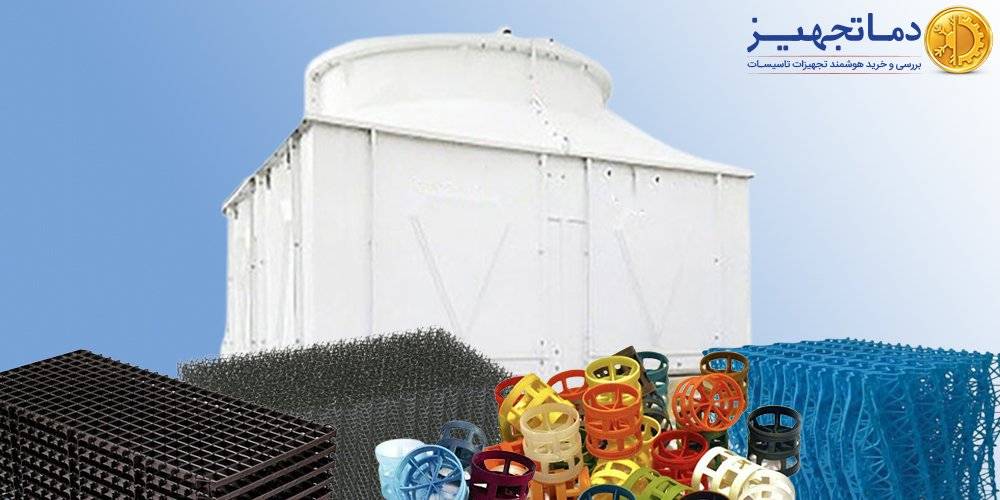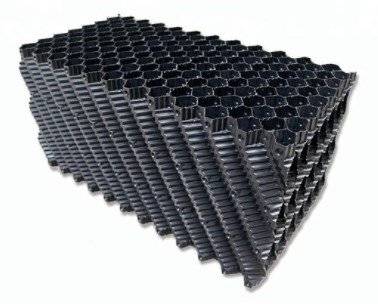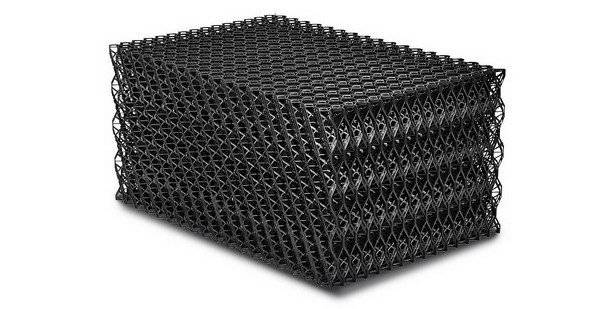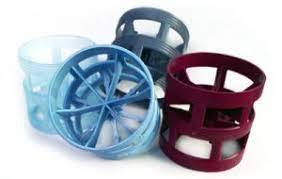One of the consumables in cooling towers is (packing), the efficiency and effective performance of this equipment depends on the packing used in it. The purpose of using cooling tower packing is to create more time and a wide contact surface between water and air so that heat transfer between the two takes place better. Packing is produced and supplied in different models, for use, important points such as replacement time, type of packing, number, and accurate calculation of their capacity should be taken into account. In this article, we are going to introduce you to the types of cooling tower packing, some common examples of them, as well as the uses and benefits of each one, stay with us.
Click to view brands, models, and different types, find out the price, and Buy A Cooling Tower.

various packaging materials for cooling towers
In terms of mechanism, there are two main types of cooling tower packing: splash and film. Splash packings, as their name implies, have a spraying function and increase the water and air contact area by breaking the water flow into smaller droplets. Splash packings receive less sediment in trade for having a lower energy exchange level than film types. Additionally, splash packings are typically welded and made in one piece, and they are much simpler to descale than film packings.
Film packing increases the amount of contact time and surface area between the airflow of the fan or propeller and the water flow by forming a thin coating of water on top of it. Special adhesives are used to make film packings in blocks.
The significance of using packaging in the cooling tower
The most important part of the internal components of the cooling tower is the packing, which is responsible for creating a useful surface for heat exchange. The importance of using packing in cooling towers becomes clear when the system gets blocked and sedimented. When sediment layers are formed in the cooling packings, the heat exchange level decreases and the efficiency of the system decreases, which is evident by the increase in the temperature of the outgoing cold water.
Typical packing methods for cooling towers
As mentioned, the packing of the cooling tower is produced in different models, and we will describe some of the most common examples below.
Cascade or film-based packaging
Cascade packing passes water in the form of a film (a thin layer) on its surface and puts it in contact with air. Because of their hexagonal shape, they are known as honeycombs and are used in most circular and cubic cooling towers.
Cascade packing of the cooling tower is produced and supplied from two polymeric materials, PVC and PP (polypropylene). The use of PVC cooling tower packing is more than PP type because of its cost-effectiveness today. Film packings are classified into several different grades according to the type of step or distance between the diagonal sheets. Reducing the packing pitch increases the level of heat transfer between water and air, and on the other hand, it causes a lot of sedimentation and clogging of the packing in a short period. Therefore, choosing the packing step in the standard range is one of the most important principles of cooling tower design. Generally, in all types of cooling towers, step 19 and step 14 packings are used, and step 12 is also used in limited conditions. 23 to 30-step packings are also mostly used in sewage treatment plant systems for the growth of beneficial bacteria. The advantages of PP cascade packing are as follows.
- Higher temperature resistance of polypropylene polymer (PP) than polyvinyl chloride polymer (PVC)
- Ability to acid wash PP honeycomb packings in every cycle of the cooling tower
- Using thermal welding instead of glue in polypropylene honeycomb packing
- Higher lifespan and no need for difficult maintenance and annual replacement

Packing net splash
Packing Net Splash alters the flow of water landing on itself by introducing a spray feature, which reduces the size of the water droplets. Despite this ability, the air movement and hot water flow have a larger surface area of exchange on the splash net packing. This problem has actually forced this cooling tower packing strategy to operate differently than its competitors. Polypropylene (PP) is the substance used most frequently to make splash packaging moulds. Net Splash packaging resembles block-shaped film packaging in terms of appearance, and it is made and provided in sizes measuring 100 x 30 and 30 cm high. Male and female pins are used to join the sheets in this cooling tower packing model. The following are some benefits of net impact packing:
- acid-washing capability and simplicity of descaling
- Due to an absence of a fouling surface, fouling is lower.
- Hot water's endurance to temperatures between 90 and 95 degrees Celsius
- Due to the grid and block construction, installation is simple.
- In the cooling tower, replacement parts are very light and simple to transport.

Random splash packing
Another type of packing is random splash or glass packing, which is haphazardly put inside a chamber in the cooling tower. The water falls on this model in various directions. In the majority of crossflow and counterflow cooling towers, random splash packaging is used. This packing model's outer construction is composed of tiny cylinders with 1, 2, and 3 inch diameters. The height of these packings, which have 12 blades, ranges from 2 to 7 centimeters. Polypropylene R220 is the main component of all types of glass packaging or pal rings. Different Pal Ring versions have heat exchange levels that range from 110 to 170 square meters per cubic meter. There are several benefits to random splash packaging:
- acid-washing capability and simplicity of descaling
- considerably less accumulation than in film models
- Simple replacement and assembly
- excellent resistance to boiling water
- able to withstand hot water temperatures of up to 85 degrees Celsius without the use of glue or welding and with great durability

The most popular cooling tower packings have been described in three versions so far. The following things are also among the tower packing models that are most frequently used.
- comb packaging for eggs
- Splash-grade packaging
- Boxing for splash tubes
- roll packaging Turbo impact packaging
You can also read the article LOW CONSUMPTION AIR CONDITIONER AND DUCTED SPLIT for more information.
Final speech
You can find all types of sand filters and hundreds of other products from the specialized collection (Damatajhiz), the first and most reputable authority in the nation for building facilities equipment and all air conditioning devices. This collection guarantees the product's originality, a warranty that is valid, and a price that is fair. You can also get free guidance from the pros who specialize in heating equipment if you have any questions about selecting and contrasting the brands of this product.
Since 2004, DamaTajhiz has been Iran's first and most well-known specialized group in the area of air conditioners, air installation equipment, and all equipment for swimming pools, saunas, and jacuzzis. Use this group's period as a reference. Call +98 21 88822550 to speak with the specialists at DamaTajhiz Engineering and Production Company for more information.

We are waiting for your call and look forward to meeting you at the DAMATAJHIZ group
By sharing the above article on social networks, let your friends know about its important content.


